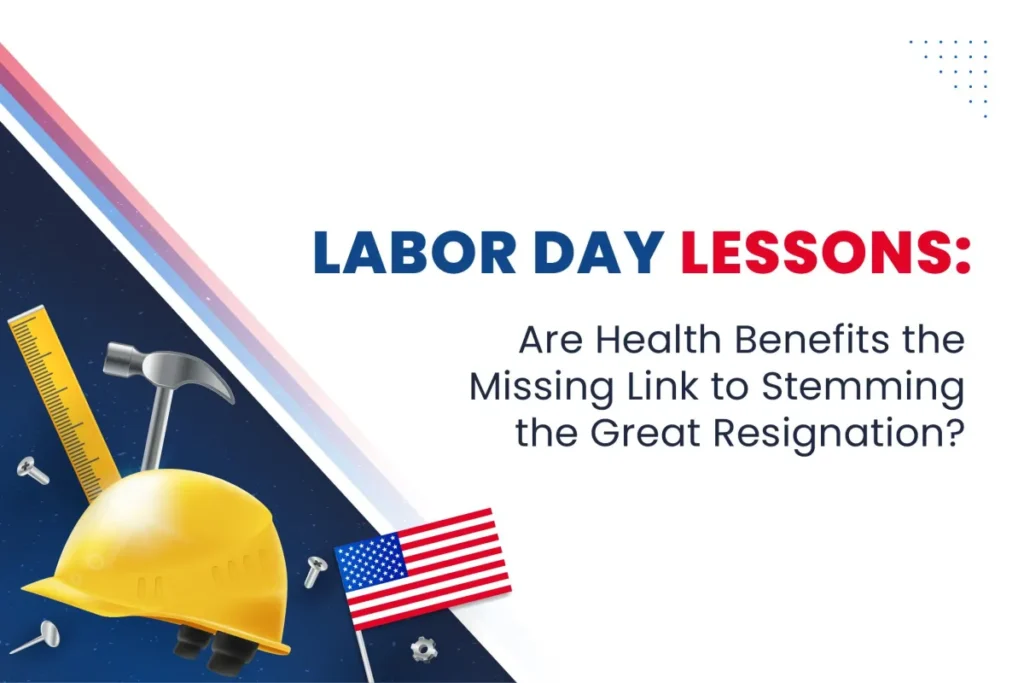Have you noticed the world is a different place? You can’t go through the motions or do things as you did in years past. We experienced how 2021 reshaped the landscape in compelling ways. It meant employers and benefits professionals had to continually adjust their strategies, staying ahead of changing dynamics to deliver benefits that meet the moment.
This year is unlike any other time. We’re getting out of COVID and just went thru the Great Resignation; Americans are changing attitudes about their life at work, and people are looking for other jobs.
Employees are disengaged, and we’re in the middle of an inflationary period where the cost of gas is $6, and a gallon of milk is $5. There are realities lived by the average person who lives paycheck to paycheck.
As of June, 61% of Americans — roughly 157 million adults — lived paycheck to paycheck, according to a new report. That’s up from 58% who reported living paycheck to paycheck in May. There’s no more disposable income for the average person. Healthcare becomes a voluntary conversation if you spend more money on gas and groceries.
A recent collaboration by The Healthcare Conundrum: The Impact of Unexpected Patient Costs on Care, PYMNTS, and Experian Health, surveyed nearly 2,500 consumers and found an alarming 56% of consumers backing out of scheduled medical visits over costs. The group most likely to be canceling doctor appointments for financial reasons are those living paycheck to paycheck and struggling to meet monthly household expenses, which puts an added squeeze on necessities like medical appointments and tests.
The workforce rethinking whom they work for contributes to improving their work-life balance and life expenses.
Surveys from Aflac, Willis Towers Watson, and Rogers Gray state that:
- 49% of employees will look for a new job in the next 12 months due to confusion or dissatisfaction with benefits.
- 78% of employees reported being more likely to stay with an employer because of their benefits program.
- Over 40% of workers said their company loyalty would increase if their benefits were customized to meet their individual needs.
A recent survey from McKinsey found that Black, Hispanic and Latino, Asian, and LGBTQ+ employees were less likely to report receiving the healthcare they needed and more likely to consider leaving their organization to get it. 30% of these individuals said they had considered switching employers to access better health benefits.
Diversity in the workforce requires a better strategy and different approaches; this also means modes of communication.
Facts from Marshall Allen state that over 1/3 (35%) of employees admit they don’t know or understand their health insurance benefits. Most employees believe employers don’t act as a resource for health benefits-related questions. Too often, employers don’t equip their employees to be better consumers.
From the employers’ perspective, only 19% believe their employees understand their health insurance benefits. Educating employees would help them make savvy decisions about their medical care, reducing their costs and the plan’s spending.
Employees have A LOT on their plates, and every $1 counts. These employees will cut .39 cents coupons and go to the grocery store for lima beans, but we’re not helping them become better healthcare consumers when they have $4, $5, $6, or $10 thousand-dollar out-of-pocket max. Out-of-pocket expenses could be nearly 20% of their take-home pay.
So not only is the health plan’s structure such an important thing but making sure employees understand and correlate the differences between their healthcare decisions and what comes out of their pocket is such a big deal. Employers need to understand this correlation and the value that can be multifaceted.
There is also a correlation between employers wanting to keep their employees for a long time, and if they do keep employees for a long time, they also want to keep healthy employees for a long time. Life isn’t the same. It is a battle cry for advisers and employers that they can’t approach things the same way.
ROI is HARD and SOFT dollars, and there is a COI (Cost of INACTION). The cost of replacing an employee can range from 50% to 400% of their annual salary.
Healthcare is expensive for BOTH employers and employees. The employer can provide better benefits for a lesser cost but NOT without the employees’ help.
WHY are communication and education so important?
Employers have diverse populations. Whether we’re talking about four generations in the workforce, people with kids, without kids, different ethnicities, socioeconomic classes, religions, sexual preferences, different levels of education, and savviness, employee communication needs to be multifaceted.
All of these are realities, and if we only COMMUNICATE with people with flat communication like paper, we can only communicate in one way. The solution is to engage employees and push more information to them. It is essential to make them better consumers and more educated about their benefits and overall packages.
Communication allows people to identify themselves more personalized basis and educates them better. Employee communication done well can SAVE money, SAVE lives, and when they’re more engaged, they like their employer more and work harder to INCREASE the business results.
Like everything in their lives, employees shop for their cellphones, car, and mortgage. They need to become better healthcare consumers. To be more engaged is absolutely the mantra, even if that is a little uncomfortable and different.
The mode of communication, consistency and different methods is critical. And when employers communicate and implement better healthcare programs, educate people on better quality healthcare, and promote a more effortless experience through advocacy, it demonstrates employers do CARE.
YES, implementing communication and education towards a diverse population is HARDER, but the easy button is expensive and kills people. And it is killing your company. Better communication IMPACTS LIVES- from budgetary (67% of bankruptcies are because of healthcare expenses) to quality of care (doctors and facilities have different QUALITY scores- would you want your mom or daughter going to a crappy doctor?).
Better communication and education further the progress of employee satisfaction with their benefits. There’s a direct correlation between people liking their benefits, staying, and returning to work for an employer. There’s also a correlation between people understanding how to use their health benefits and having lower out-of-pocket costs. And when they make better healthcare decisions, their employer saves money, too.
What is the GOAL of communication and education?
- Get employees to become better consumers.
- Get employers to communicate with their employees because their benefit plan is good for them.
Currently, with so many employees disengaged from their jobs and looking for other jobs, employees want to find a HOME. The time to communicate and educate is now.
WHAT to include in your communication?
- Educate employees on how the COST and the QUALITY of healthcare change depending on where they go:
- An educated employee will be proactive, research, and understand that MRI places have different costs, that surgeons have other quality scores, and that hospitals have additional charges and quality scores.
- As consumers, employees need to understand that their employer is doing this and asking them to be better health consumers because their EMPLOYER CARES.
MODES of communication:
- Multifaceted – personalize it to the needs of your diverse population.
- Print-email-text-video
- Be CONSISTENT
Conclusion
This month’s topic may sound basic, but the reality is that no employee can be a better healthcare consumer without consistent communication and education. The focus of this month is to draw the correlation on all the benefits an employer has by being better at educating and communicating to their employees about being better healthcare consumers. When we think about this, healthcare costs and quality change depending on where you go. The cost of the MRI can range from $600 to $3,000, but if employees don’t understand and genuinely start engaging, employers will not see savings, and neither is the employee. How we build these programs is one thing, but how we communicate proactively and multifaceted ensures that employers understand how HUGE employee communication is.
Given the time we are in now, it couldn’t be more critical. The average employee lives paycheck to paycheck and doesn’t have a couple of extra bucks. The lower cost is just the pure hard dollar cost of getting more people to go to higher-quality places. But the soft dollar cost is, “hey, we’re doing this for you because we care.”
With the hands-off approach that advisers and most employers take with health benefits, communication and education will be an absolute difference in how an employee or recruit looks at their engagement with a specific employer.
It’s just not about open enrollment and not just a few things here and there. People need to draw the correlation between the standard tactics we’re used to and the WHY behind them. This understanding will make a big deal on employers’ impact on their employee population.

